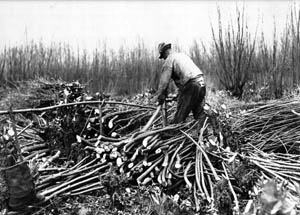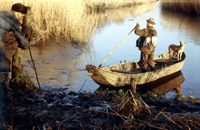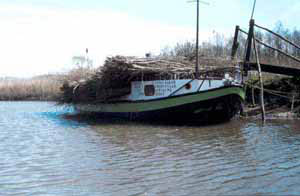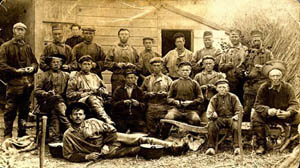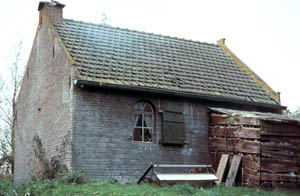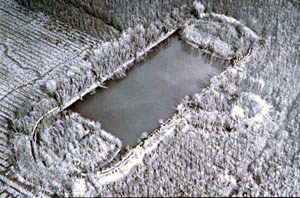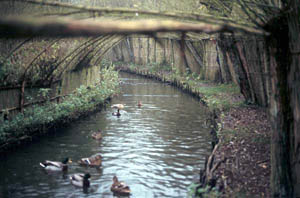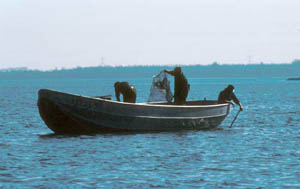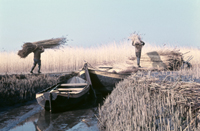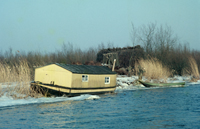Before the creation of the National Park, and well into the 1960’s, the Biesbosch was witness to much human activity. Harvesting and cutting of reed and willow for use in industries such as thatching were still being carried out on a large but declining scale. In many places the application of duck decoy traps were exploited, especially during the winter months. Fisheries were an important source of income, salmon and even sturgeon being caught in the rivers. However overfishing, pollution and canalisation of the rivers lead to an inevitable decline in these activities with the final blow being the closure of the estuaries in the Delta Plan with its reduction of the tidal range from 2½meters to ⅓meter.
Historical relics and remains from these old industrial activities once carried out in the Biesbosch are still visible even today. The two duck decoy traps within the Dordtse Biesbosch can still be found. Remainders of old weirs used to regulate the flow of water within the area are still visible. Remains of old river craft known as arks, used to carry the reed and willow branches, are still to be seen. Most noticeable are the raised shelters used by the reed and willow cutters whilst at work within the Biesbosch.
